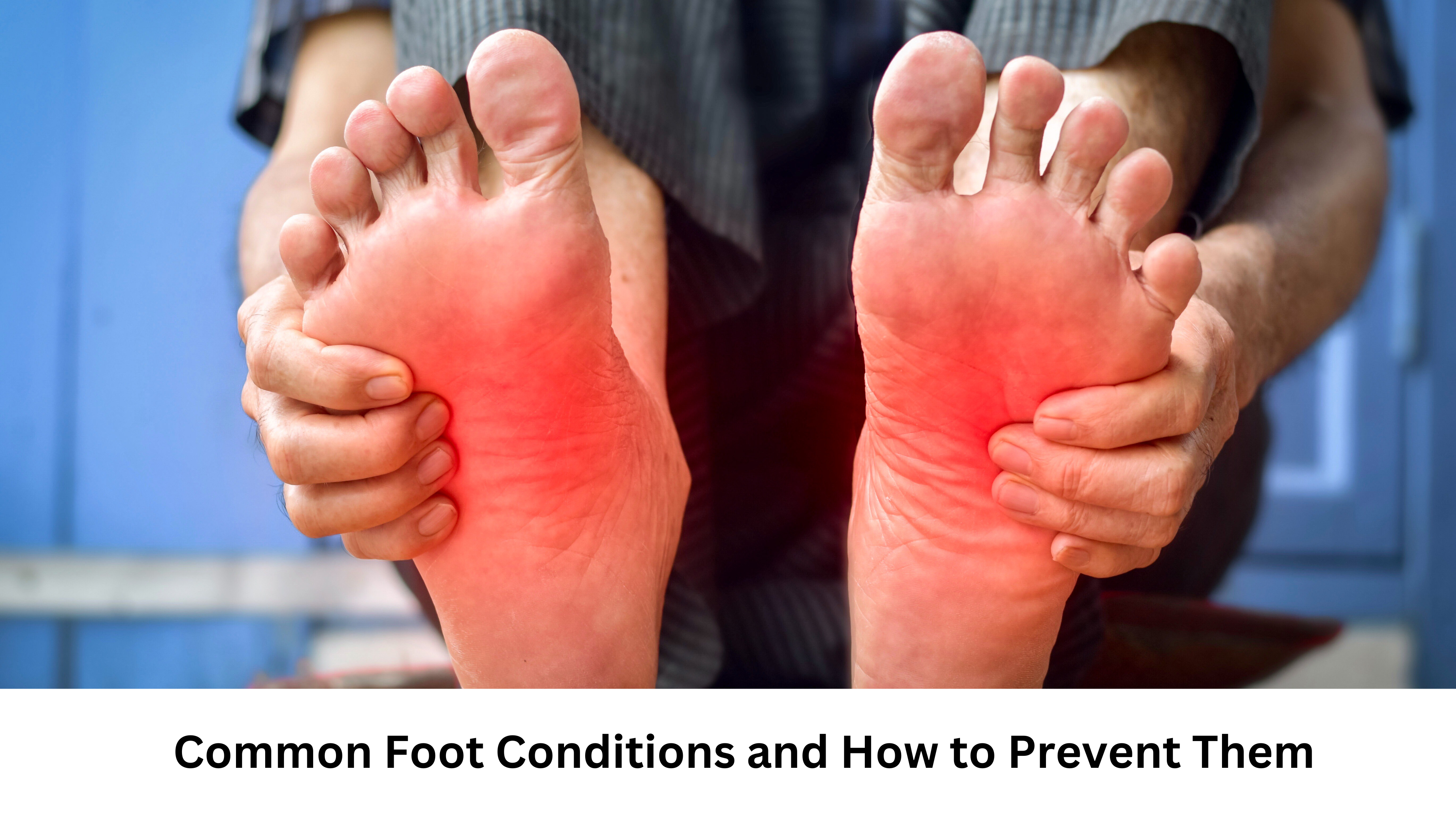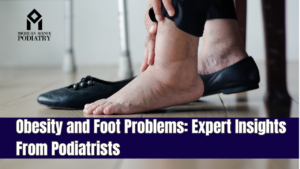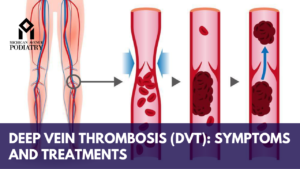Our feet carry us through life, yet they often receive little attention until problems arise. Understanding common foot conditions and how to prevent them is crucial for maintaining overall foot health, especially in places like Elmhurst, Chicago, Tinley Park, Downtown Chicago, and Flossmoor. In this blog, we’ll explore several prevalent foot conditions and effective strategies to keep your feet happy and healthy.
1. Plantar Fasciitis
What It Is:
Plantar fasciitis is one of the most common causes of heel pain. It occurs when the plantar fascia, a thick band of tissue that runs along the bottom of the foot, becomes inflamed.
Symptoms:
- Sharp heel pain, especially in the morning
- Discomfort after prolonged sitting or standing
Prevention Tips:
- Wear Supportive Footwear: Choose shoes with good arch support and cushioning, especially if you’re in Chicago or Elmhurst where walking is common.
- Stretch Regularly: Incorporate stretching exercises for your calves and plantar fascia into your routine.
- Avoid Overtraining: Gradually increase your activity levels, particularly if you’re starting a new exercise program.
2. Bunions
What It Is:
A bunion is a bony bump that forms at the base of the big toe, causing the toe to angle towards the second toe. This condition can lead to pain and discomfort.
Symptoms:
- Swelling and redness around the big toe joint
- Pain when wearing shoes
Prevention Tips:
- Choose Proper Footwear: Avoid narrow or high-heeled shoes that place undue pressure on the toes.
- Use Orthotics: Consider using custom insoles to help align your foot properly.
- Avoid Tight Socks: Make sure your socks fit well and do not constrict your toes.
3. Athlete’s Foot
What It Is:
Athlete’s foot is a fungal infection that typically begins between the toes. It thrives in warm, moist environments, making it common among athletes and those who frequent swimming pools or locker rooms.
Symptoms:
- Itching, burning, and stinging sensations
- Red, flaky skin or blisters
Prevention Tips:
- Practice Good Hygiene: Keep your feet clean and dry, especially between the toes.
- Wear Breathable Footwear: Choose shoes made of breathable materials and change socks regularly.
- Avoid Walking Barefoot in Public Areas: Always wear flip-flops or water shoes in communal showers or pools.
4. Ingrown Toenails
What It Is:
An ingrown toenail occurs when the edge of a toenail grows into the surrounding skin, causing pain and potential infection.
Symptoms:
- Pain and redness around the nail
- Swelling and sometimes pus
Prevention Tips:
- Trim Nails Properly: Cut your toenails straight across rather than rounding the edges.
- Choose the Right Footwear: Avoid tight shoes that can press on your toes.
- Keep Feet Clean and Dry: Regular foot hygiene can help prevent infections.
5. Heel Spurs
What It Is:
Heel spurs are bony growths that develop on the underside of the heel bone, often associated with plantar fasciitis.
Symptoms:
- Sharp pain in the heel, particularly during movement
- Pain that lessens with rest
Prevention Tips:
- Wear Supportive Shoes: Select footwear that provides good arch support, especially in areas with diverse terrains like Tinley Park.
- Stretch Regularly: Incorporate calf and foot stretches into your daily routine.
- Maintain a Healthy Weight: Excess weight can put additional strain on your feet.
6. Flat Feet
What It Is:
Flat feet, or fallen arches, occur when the arches of the feet are lower than normal or absent. This condition can lead to pain and discomfort, particularly in the feet, knees, and back.
Symptoms:
- Pain in the arch or heel
- Swelling along the inside of the ankle
Prevention Tips:
- Wear Arch-Supporting Footwear: Look for shoes with built-in arch support or use custom orthotics.
- Perform Foot Exercises: Strengthening the muscles in your feet can help maintain arch stability.
- Avoid Prolonged Standing: Take breaks and sit down if you’re on your feet for long periods.
7. Corns and Calluses
What It Is:
Corns and calluses are thickened areas of skin that develop due to repeated friction or pressure, often from poorly fitting shoes.
Symptoms:
- Hard, raised bumps on the skin
- Discomfort when pressure is applied
Prevention Tips:
- Choose Proper Footwear: Ensure your shoes fit well and provide enough room for your toes.
- Use Protective Pads: Consider using pads to reduce pressure on affected areas.
- Moisturize Regularly: Keeping your feet moisturized can help prevent dry, thickened skin.
8. Diabetic Foot Issues
What It Is:
Diabetes can lead to various foot problems, including neuropathy and poor circulation, increasing the risk of infections and ulcers.
Symptoms:
- Numbness or tingling in the feet
- Open sores or wounds that do not heal
Prevention Tips:
- Regular Foot Exams: Monitor your feet daily for any changes or issues.
- Manage Blood Sugar Levels: Keeping diabetes under control can prevent complications.
- Wear Protective Footwear: Choose shoes that fit well and provide adequate support.
Conclusion: Prioritize Foot Health
By understanding common foot conditions and their prevention strategies, you can take proactive steps to maintain your foot health. Regular check-ups with a podiatrist in Chicago, Elmhurst, Tinley Park, Flossmoor, or Downtown Chicago can help catch issues early and ensure that you stay on your feet comfortably. Remember, taking care of your feet today can lead to healthier, pain-free tomorrows.



